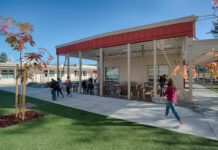Wrong Kind of Housing Growth
The City Council signaled their support on Monday night (May 6) for unrestricted, “for sale” free market housing growth under the “Geographic Area” plan that would amend the GMO (Growth Management Ordinance).
I am extremely disappointed, and I wonder if they considered any lessons learned from the 2016 Measure R defeat (60% to 40%).
That measure would have also allowed for unrestricted housing growth at market rates. Residents voted and showed their preference for keeping Healdsburg a “small town” with slow, measured growth.
The loser Monday night for the community was option 2, Multifamily Rental Units from Measure P that would encourage middle income rental housing that is badly needed. Numerous public polls and Healdsburg’s own Housing Element showed strong support for the “missing middle” and affordable housing for our work force and residents.
Only 15% of Healdsburg’s workforce lives in Healdsburg. These initial Council actions show missing support for our workforce and middle class. Developers are likely to direct new market rate housing towards high end/luxury housing.
Data shows Healdsburg’s housing growth to be 15% from 2023-31 (801 units)—2% average per year. Almost 63% of this growth will come from above moderate-income levels. This is a pretty fast growth rate that will have impacts on our infrastructure (roads, traffic, congestion, water etc.).
The free-market, no-limits housing approach supported by the council could likely end up with luxury “Mill District” type housing in the downtown. If the council chooses the downtown area, it will be susceptible to luxury housing. Why? For sale Mill District units range from $2MM to $8MM approximately. These prices could be emulated downtown, and the charm and character of “small town” Healdsburg would disappear even more.
I am no fan of “Mill District” type developments anywhere in Healdsburg. Its 210 units (size, style, prices) go against the nature of “small town Healdsburg” that the General Plan supports. As an example: Would one like to see a site, such as Sanderson Ford on Healdsburg Avenue, become a “Mill District” type of luxury development?
In the end, you may ask if you can trust the council to protect the charm and character and growth of our small town. That was the issue in 2016. Are you concerned about the downtown area and its future? There is still time to influence the process. You can urge the council to protect the downtown area, keep growth modest and support its residents.
Bruce Abramson
Healdsburg
Numbers Don’t Add Up
Yesterday (Monday, May 6) I presented for 180 seconds at the City Council meeting.
It is impossible to relay all the consistency and calculation errors in the Raftelis Water Rate Study in that time, so I had to dramatically reduce everything I wish I could have said.
Water revenue depends on two things: consumption and the number of meters.
In terms of consumption, it is mentioned first on page 19, where the report says in 2023, our water consumption was 506 acre-feet, which when converted to HCF (Hundred Cubic Feet), is only 220,413.
But elsewhere in the report (page 25), it references our water consumption as 519,346 HCF.
This is not a tiny error. One number is less than half of the other; in fact, it is 42% of the other. In school, that would be called an “F.”
But beyond that, how many total meters are there in Healdsburg?
One part of the report says there are 6,112 meters in Healdsburg, but later in the report, that number is shown as 4,796 (pages 24 versus 51). That number differs by over 1,200.
Why does this matter?
Using the different numbers of meters means in one part of the financial calculations, the revenue generated by the connection charge is either way high or way low. The total revenue for water and sewer is guaranteed to be wrong.
If the 6,112 number is correct then when the 4,796 number is used, revenue will be low by over 20%. And the opposite is also true: If the 4,796 number is correct, then when the 6,112 number is used, the revenue will be high by at least 20%.
None of this means we don’t need a rate increase. I too want greater water security, and I don’t want to go back to the days of hauling recycled water.
What this means is the rates adopted by the City Council last night are based on flawed information, that is guaranteed to be wrong.
At this point, all I can hope for is that the City Council will use this first year as a test to see how accurately they have predicted the revenue during this first summer’s actual use. And that they would use that to correct future year’s rate increases.
Stanley Crane
Healdsburg
Readers are welcome to send letters to ed****@***************ne.com.










Bruce Abramson is incorrect. As long as zoning laws exist, there is no “free market housing” in Healdsburg. If you want low-income housing, get rid of the zoning laws.
Stanley Crane, you may be interested to know that until 2014, when Irish Water was formed:
https://en.wikipedia.org/wiki/Irish_Water
Water and sewage were paid for from general taxation, e.g., VAT or other taxes, using the general fund.
Now, Ireland has almost constant rain, but the plumbing leaves much to be desired. It is very old—perhaps even older than Healdsburg’s.
Still, why not eliminate the meters and bills and pay for the water and sewage from the General Fund?
What do we get for our property taxes to the County? Zero. Use that money to pay for water and sewage.